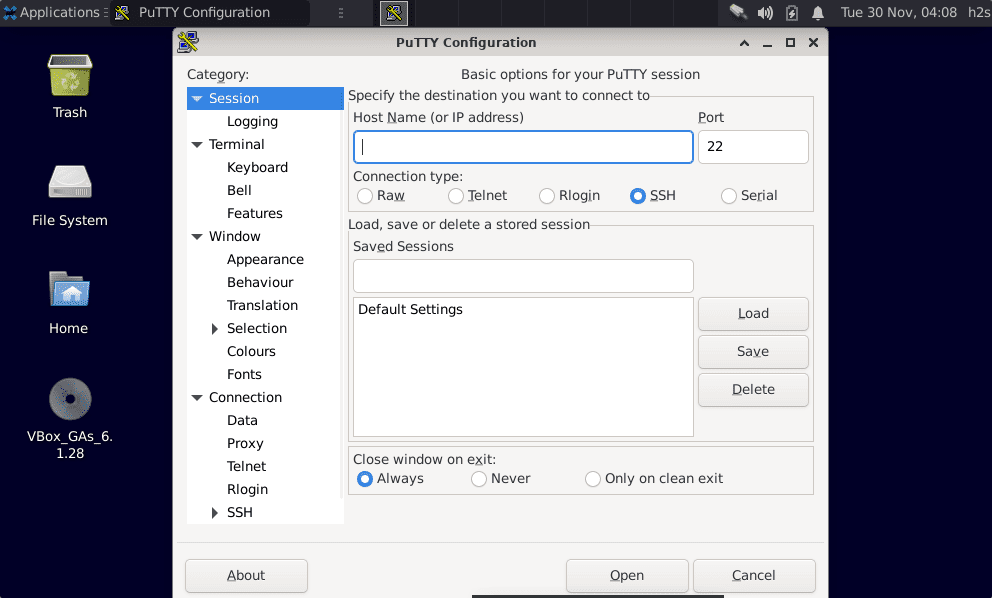
Now you can log in to your instance through the use of your SSH key. Logging into your Instance with your SSH Key A reboot is required to add the SSH Key to the instance, so perform a reboot on the instance when you're able to do so.Īfterward, your SSH Key has been applied to the instance. Press the Change SSH Keys and select the SSH Key you named at the beginning of this tutorial. Now, navigate to an instance in your Cloud Control panel that you wish to have the SSH Key applied to. Next, select the field Default Settings and press the Save button to the right of the box. Select Session underneath the Category: left panel, as seen below: To do so, you'll now navigate back to the first panel displayed when you originally opened PuTTY. PuTTY is a little bit confusing in terms of saving your settings. Using the Browse button displayed above, select the SSH Private Key you saved earlier in the tutorial. This is where we'll be specifying the SSH Key you downloaded. In the left panel labeled Category: press the + next to SSH to expand the menu selection.įrom there, select the category Auth as seen below: Once opened, the display will appear as follows: Setting Authentication (SSH) Keys
#Putty ssh gui software#
PuTTY will have installed other software pieces, but the one you want to open is just called PuTTY. Now you can find PuTTY in your programs and files on your computer. All of the default options will work perfectly fine for this setup. msi file and proceed with the installation steps. The vast majority of more recent PCs these days are 64-Bit.
#Putty ssh gui Pc#
Select 32-Bit or 64-Bit based on the PC you're using.

somewhere where it won't get lost or removed easily. Ensure that you save the file in a location you'll remember.

Select the radio button for PuTTY, as this is the terminal we will be using in this tutorial.įrom there, press the Download button. Pressing Create Key will begin the process to have the key created. In this example, I'll be naming the key GlobalKey, as it'll be my Default key for all of my instances.

Is this a key for you and all of your instances? Key names such as GlobalKey, JimsKey, DALKey, and SEAKey are great choices for names to remember what they're to be used for. Name the key something memorable for how it'll be used. Once you have entered into the SSH Keys screen in your Cloud Control, you'll see a screen similar to the one shown below: Naming The Key Navigate to the SSH Keys tab, found under the Servers drop-down as shown below: If you are unfamiliar with locating your Cloud Control Panel, please let us know via Live Chat, and we could help. This guide walks you through setting up and configuring an SSH key in the Hostwinds Cloud Control Panel, assuming you don't already have one setup.


 0 kommentar(er)
0 kommentar(er)
